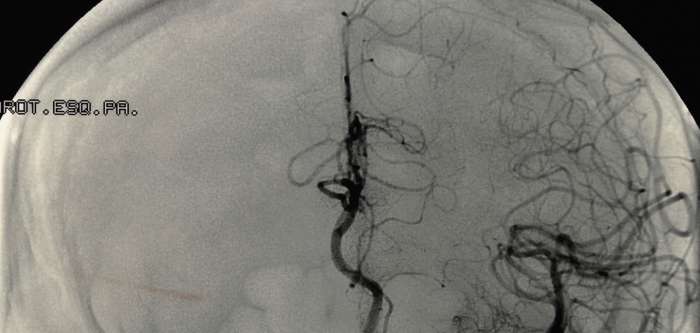It feels like getting hit in the back of the head with a sledgehammer.
That is how Mark Bain, MD, a neurosurgeon with the Cerebrovascular Center at the Cleveland Clinic in Ohio, describes the pain of a ruptured aneurysm, explains Everyday Health.
When an aneurysm ruptures, blood spills into the space around the brain, giving affected patients the “worst headache of their life.”
And, that’s exactly how Lisa Colagrossi, a mother of two and a respected news journalist in New York City, described her pain.
“She said it felt like her head was going to explode,” her husband Todd Crawford told Prevention. Along with her terrible headache, Crawford explained, his wife had a few of the other classic symptoms including a stiff neck, a tingling sensation in her face and sensitivity to light.
“The headache would last a couple of hours, and then it would subside for a day or two,” Crawford said. “We talked about her getting it checked out, but she didn’t feel like she had time, so we dismissed it.”
Tragically, those symptoms were the signs of a ruptured aneurysm that would claim Colagrossi’s life just three weeks after they started.
RELATED: Researchers May Have Finally Identified The Cause Of Crohn’s Disease
Since her death in March 2015, Crawford has worked hard to make sure other people do not ignore the warning signs. He has created The Lisa Colagrossi Foundation to create public awareness of those signs and symptoms. He explained his motivation to Prevention:
“One thing that has haunted me more than anything else is, how could we not have known? The more I looked into aneurysms, the more I found that there’s no one out there talking about them, and there’s very little public education about the warning signs,” he said.
The foundation urges you to seek medical attention immediately if you experience any of these symptoms:
- Sudden WHOL—worst headache of life
- Sudden sensitivity to light
- Sudden stiffness of neck
- Sudden sharp pain behind or above one eye
- Sudden blurred or double vision
- Sudden numbness and tingling in facial area
- Sudden loss of consciousness
- Sudden confusion or change of mental status
- Seizure
- Perceived “gun shot” noise or extremely loud “BOOM”
- Drooping eyelid
- Nausea and vomiting
Quick medical attention could mean the difference between life and death.
Source:









